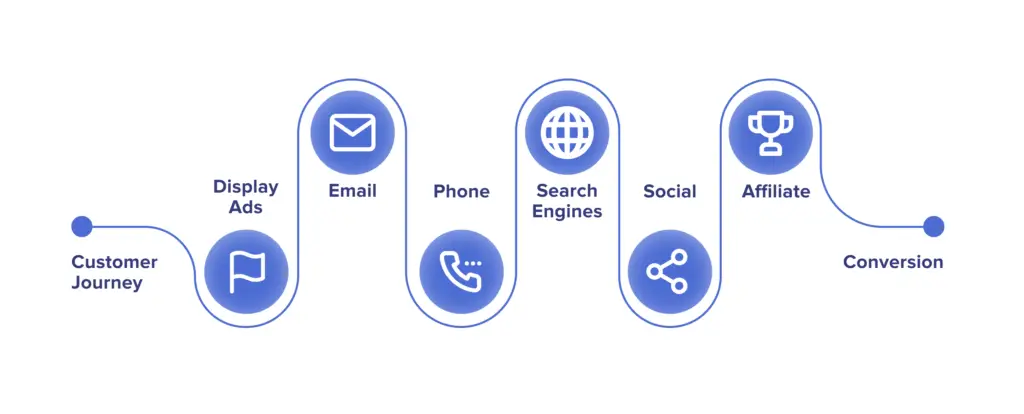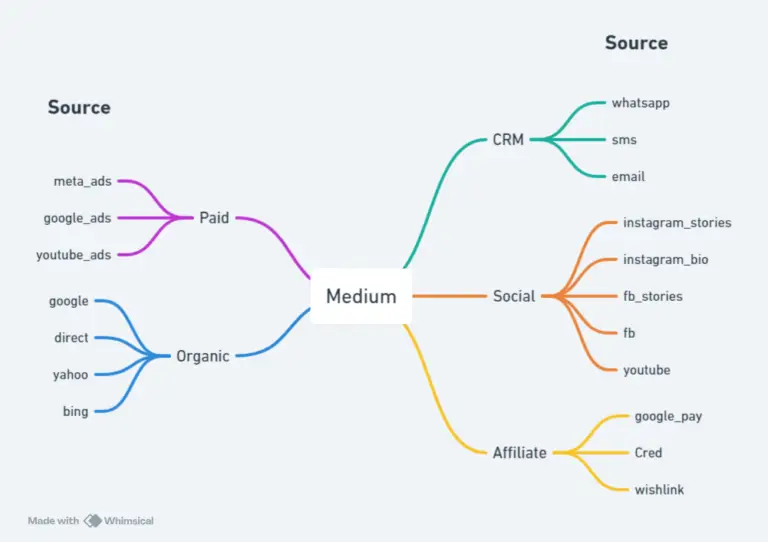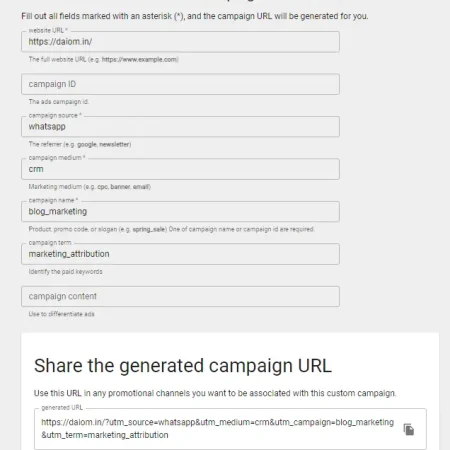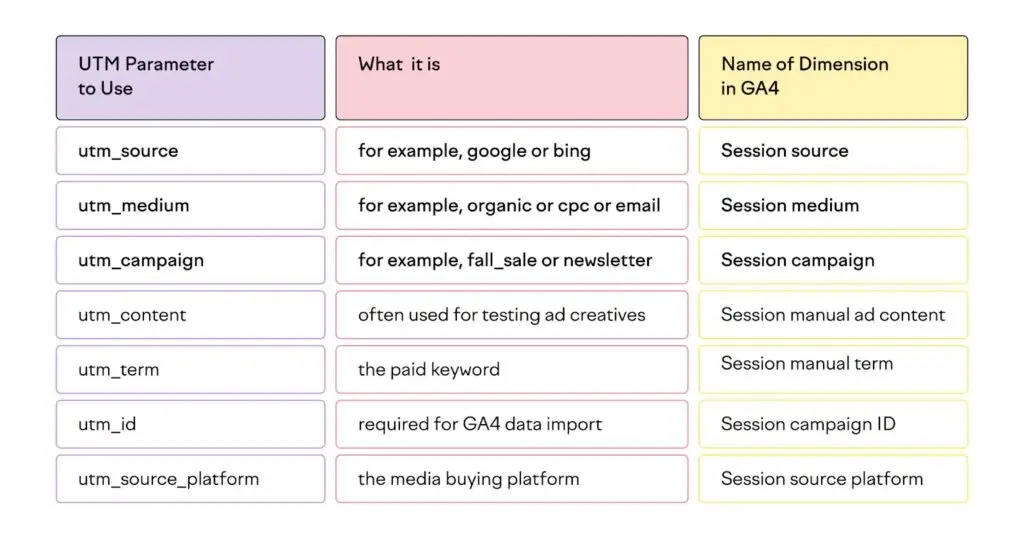Marketing attribution in digital marketing is often a highly glorified and discussed topic. There are various models of attribution, such as first click and last click, that assign value to different touchpoints in a customer’s journey. However, through our experience working with multiple brands, we’ve noticed a simple yet frequently overlooked aspect: Link tracking attribution.
Without UTM parameters, which are essential for tracking the effectiveness of marketing campaigns, the foundation of any marketing attribution model falls apart. When traffic is not properly classified, it limits the ability to analyse the performance of various marketing efforts at granular level. This lack of detailed data can result in poor marketing strategies, wasted resources, and missed opportunities for growth.
Therefore, implementing and utilising UTM parameters effectively is fundamental to any robust omnichannel marketing attribution system.
“In my experience, we have seen people working in performance marketing do a great job of campaign attribution but for most of the other paid channels such as CRM, social media, Affiliate, they don't follow a strong UTM tracking discipline. This impacts their ability to measure performance of campaigns or influencer level ROI. “
Saurabh Agrawal
Table of Contents:
- What is Marketing Attribution?
- What Are the Consequences of Not Using UTMs?
- What is a UTM?
- What Are UTM Parameters?
- How to Create UTM enabled URL?
- How does Google enable UTM attribution?
- How to Track UTMs in Google Analytics?
- What are the Benefits of link tracking attribution?
- What are the Best practices to enable link tracking?
1. What is Marketing Attribution?
“What led a customer to buy from you?” It’s a simple question that becomes difficult to answer as a customer today experiences a brand through various omni channel touch points before making a purchase. The goal of marketing attribution is to help answer that question.

Marketing attribution is the process of determining which interactions influence a customer to purchase from your brand — it lets you know what route a customer took to your products.
With this information, marketers can identify which campaigns or channels drive the most conversions.
Using attribution in marketing also helps omnichannel marketing teams determine how to target campaigns to reach more high-converting customers or to retarget existing customers for repeat purchases.
Marketing attribution helps align marketing and sales data at all stages of the sales funnel — from initial lead qualification through to conversion.
2. What Are the Consequences of Not Using UTMs?
When UTM parameters are not utilized, Google Analytics 4 (GA4) can misinterpret the traffic flowing into your website, leading to incorrect attribution of omnichannel marketing efforts. This misattribution can cause several issues:
- Inaccurate Traffic Source Identification
- Misleading Performance Metrics
- Ineffective Marketing Strategies
- Hindered Optimization Efforts
- Challenges in Resource Allocation
When UTM parameters are not used, traffic flowing into your website can become unattributed in Google Analytics 4 (GA4). This results in traffic being categorized as (not set) in the source/medium session and as “Unassigned” in the Session Primary Channel section.

3. What is UTM?
UTMs are snippets of code appended to URLs, allowing marketers to track the performance of specific marketing activities and campaigns.
These codes contain parameters that provide information about the source, medium, campaign, and other relevant details of the URL’s origin.
It not only helps you identify the business impact from source but can go down the deeper levels of campaigns, offers, ad sets etc.
The purpose of UTMs is two fold:
- Tracking: UTMs enable marketers to track the performance and engagement of different marketing channels, campaigns, and specific touchpoints. By adding unique UTM codes to URLs, marketers can monitor and analyze the effectiveness of their omnichannel marketing efforts with precision.
- Attribution: UTMs attribute value to each touchpoint or omnichannel marketing channel, helping businesses understand which elements contribute most to conversions, leads, or desired outcomes—this attribution data aids in optimizing marketing strategies, allocating resources effectively, and improving ROI.
4. What Are UTM Parameters?
There are five different parameters that you can add to your URLs:
- Utm_source:
Source parameters identify the site, advertiser, publication, or other entity that is sending traffic to your site. - Utm_medium:
Medium parameters identify the omnichannel marketing or advertising medium that has driven traffic your way.

- Utm_campaign:
A campaign parameter is an individual slogan, promo code, or omnichannel marketing campaign. - Utm_term:
Term parameters identify paid keywords. - Utm_content:
Content parameters distinguish similar pieces of content within the same ad from one another.
An example would be if you had two call-to-action links within the same advertisement, and one was an image and the other a headline, you could differentiate them from each other by assigning a different value to each one’s utm_content parameter.
5. How to Create UTM enabled URL?
To use UTMs for omnichannel marketing attribution effectively, marketers need to define and set up specific parameters that align with their tracking and attribution goals.
To create UTMs, you can use a free Google Analytics tool. Link

Example of UTM link:
https://daiom.in/?utm_source=whatsapp&utm_medium=crm&utm_campaign=blog_marketing&utm_term=marketing_attribution
6. How does Google enable UTM attribution?
When the UTM parameters are specified on the URL, these get parsed out and placed into a Google Analytics cookie. If a website does not have Google Analytics, there is no point in having UTMs.
Assuming the website is configured to capture UTM parameters into an external database, when a micro or macro conversion happens, whatever is in the Google Analytics cookie at the time of conversion gets replicated to the database

7. How to Track UTMs in Google Analytics?
Each UTM parameter correlates to a dimension in GA4. A dimension is simply an attribute of GA data.
When you’re looking for your UTM codes in GA, look for the dimensions shown on the right in the image below.

8. What are the Benefits of link tracking attribution?
- Improved Accuracy in Tracking and Attributing Marketing Efforts:
UTMs ensure accurate data collection by capturing specific details about a URL’s source, medium, and campaign. This eliminates guesswork and provides precise information on which marketing activities drive results. Accurate attribution reports help avoid confusion and discrepancies. - Granular Insights into the Performance of Different Marketing Channels:
UTMs enable detailed tracking of individual marketing channels, allowing marketers to measure engagement, conversions, and outcomes. Comparing channel performance helps allocate resources efficiently, focusing on those generating the highest ROI. - Optimization of Marketing Campaigns Based on Data-Driven Decisions:
UTM data helps evaluate the success of marketing campaigns, identifying areas for improvement. Marketers can make informed decisions to adjust messaging, targeting, or budget allocation, resulting in enhanced campaign performance and efficiency. - Better Understanding of Customer Journeys and Conversion Paths:
UTMs provide a comprehensive view of the customer journey by tracking touchpoints across various channels. This insight helps identify influential touchpoints, understand customer behaviour, and refine omnichannel marketing strategies. Tracking conversion paths aids in optimising efforts to guide customers toward desired actions.
9. What are the Best practices to enable link tracking?
Implementing UTMs effectively is crucial for accurate tracking and attribution of marketing efforts. Follow these practices to get the benefits of UTMs:
- Create Consistent UTM Naming Conventions: Establish clear and consistent naming conventions for UTM parameters across your campaigns. This ensures uniformity and makes it easier to analyse data consistently.
- Properly Tag URLs with UTMs: Ensure that all relevant URLs are properly tagged with UTMs. Include parameters such as utm_source, utm_medium, utm_campaign, and others to accurately identify the source, medium, and campaign associated with each URL.
- Integrate UTMs with Analytics Tools and Platforms: Connect your UTMs with analytics tools and platforms such as Google Analytics. This integration allows for seamless tracking and data collection, providing valuable insights into campaign performance.
- Regularly Review and Analyze UTM Data: Take the time to review and analyse the data collected through UTMs on a regular basis. Look for patterns, trends, and key insights that can inform decision-making and optimise your omnichannel marketing strategies.
- Use of branded Link shortening: This is an excellent way to build trust and increase brand recognition and awareness.
An Example of How Zomato use branded short link for attribution is given below

Having a basic link tracking mechanism is the backbone of driving attribution thus leading to stronger analytics.
We have collaborated with over ten brands to improve their attribution. The main key here is that no campaign should go out without proper UTM tracking.
Additionally, maintaining a well-organized spreadsheet is crucial. Below is an example of the layout for such a sheet.

To understand it further, check out the podcast on Decoding Marketing And Analytics In The D2C And Omni-Channel World


